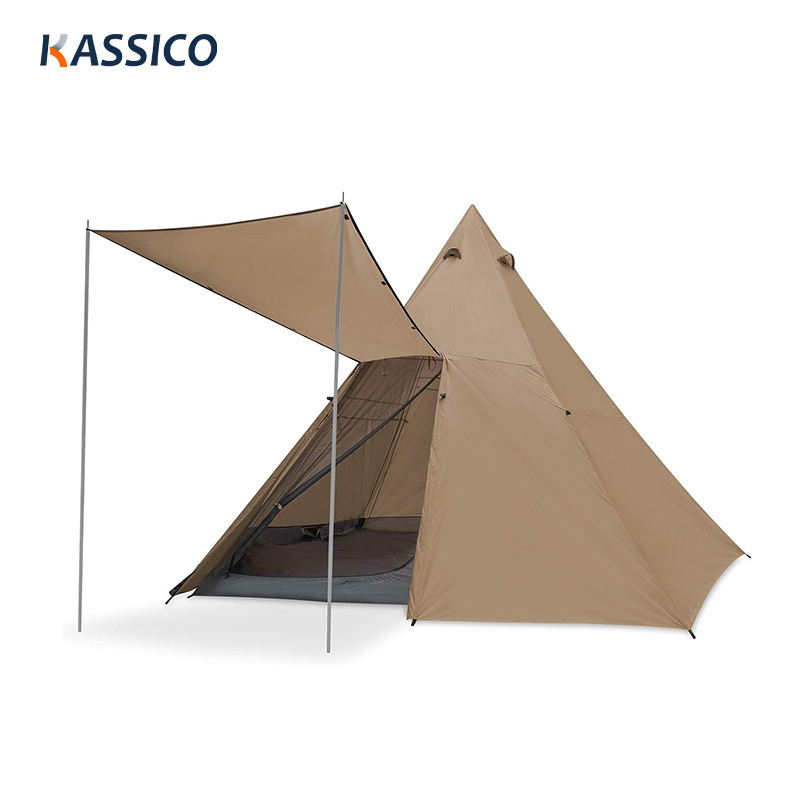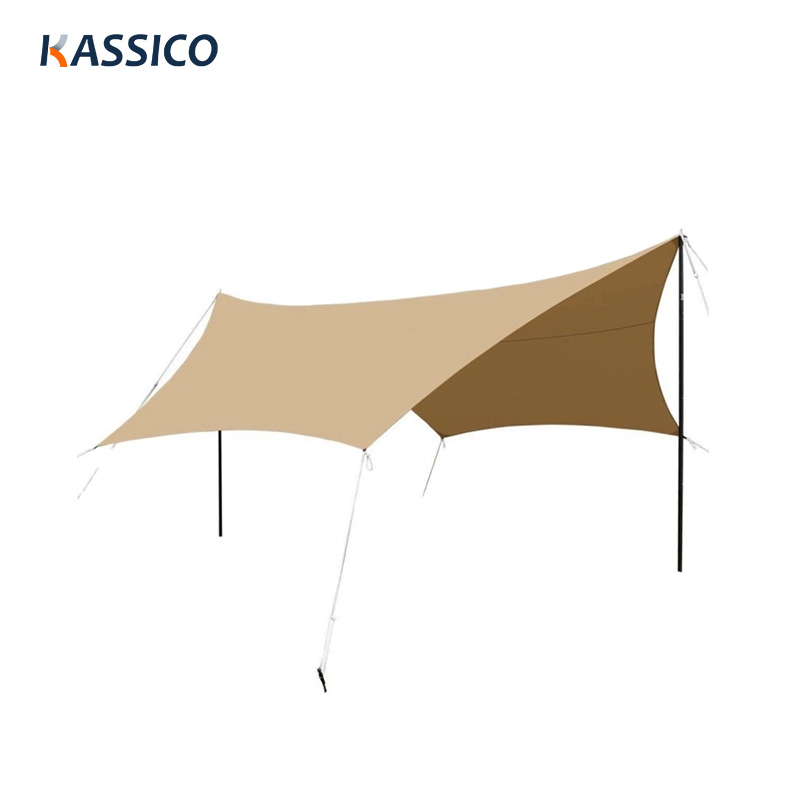Waterproof Tarp in Spring Camping: A Must-Have Gear
Spring camping brings refreshing weather, blooming landscapes, and the thrill of outdoor adventure. However, it also comes with unpredictable weather conditions, including sudden rain showers, damp ground, and strong winds. A waterproof tarp is an essential piece of gear that enhances your camping experience by providing protection and versatility.
Why Use a Waterproof Tarp in Spring Camping?
-
Weather Protection: Springtime often brings unexpected rainfall. A waterproof tarp acts as a rain shield, keeping your campsite dry and comfortable.
-
Ground Cover: Wet and muddy terrain can be inconvenient. Using a tarp as a groundsheet prevents moisture from seeping into your tent or gear.
-
Wind Barrier: Windy conditions can make cooking and relaxing difficult. A tarp serves as a windbreak to create a more comfortable environment.
-
Versatile Shelter: Whether you need a temporary cooking space, a shaded area, or an emergency rain cover, a tarp is highly adaptable.
-
Gear Protection: Keeping your camping equipment dry is crucial for a pleasant trip. A tarp provides an additional layer of protection for backpacks, firewood, and other essentials.
How to Choose the Right Waterproof Tarp?
-
Material: Opt for high-quality materials like polyethylene, polyester, or ripstop nylon with waterproof coatings.
Waterproof tarps come in various materials, each offering different levels of durability, flexibility, and water resistance. Here are some common options:
1. Polyethylene (Poly Tarps)
-
Features: Lightweight, waterproof, UV-resistant, and affordable.
-
Best For: General camping, ground covers, rain protection, and emergency shelters.
-
Pros: Budget-friendly, available in multiple thicknesses.
-
Cons: Less durable over time, prone to tearing in extreme conditions.
2. Vinyl (PVC) Tarps
-
Features: Heavy-duty, waterproof, flame-resistant, and highly durable.
-
Best For: Long-term outdoor use, truck covers, and industrial applications.
-
Pros: Extremely tough, resistant to chemicals and abrasion.
-
Cons: Heavier and more expensive than poly tarps.
3. Canvas Tarps (Wax-Coated or PVC-Coated)
-
Features: Water-resistant (not fully waterproof unless coated), breathable, and durable.
-
Best For: Covering equipment, bushcraft, and camping in mild conditions.
-
Pros: Allows moisture escape, reducing condensation.
-
Cons: Heavier, may require re-coating for full waterproofing.
4. Silnylon Tarps
-
Features: Made from silicone-coated nylon, lightweight, and fully waterproof.
-
Best For: Ultralight camping, backpacking, and emergency shelters.
-
Pros: Very lightweight and compact.
-
Cons: More expensive, less durable than vinyl or poly tarps.
5. Silpoly Tarps
-
Features: Similar to Silnylon but made of polyester, reducing sagging in wet conditions.
-
Best For: Ultralight camping in humid or wet environments.
-
Pros: Lighter than Silnylon, doesn’t absorb water.
-
Cons: More expensive than traditional tarps.
6. Tyvek Tarps
-
Features: Lightweight, breathable, and water-resistant.
-
Best For: Backpackers and ultralight hikers.
-
Pros: Affordable, lightweight.
-
Cons: Noisy, less durable than traditional tarps. Size: Select a tarp that suits your camping setup. A larger tarp provides more coverage, while a compact one is easier to carry.
-
Durability: Reinforced corners, strong seams, and heavy-duty grommets ensure longevity and reliable use.
-
Weight: If backpacking, a lightweight and packable tarp is ideal; for car camping, a heavier tarp with enhanced durability is preferable.
-
Setup Flexibility: Look for multiple tie-down points to create different shelter configurations.
Best Ways to Use a Tarp in Spring Camping
-
Rainfly: Suspend a tarp above your tent to prevent water from seeping in.
-
Canopy or Awning: Create a covered outdoor space for cooking and relaxing.
-
Tent Footprint: Place a tarp under your tent to keep moisture away.
-
Gear Storage Shelter: Use a tarp to protect firewood, backpacks, and food supplies from rain and dew.
Where to use a canopy?
Canopies are versatile outdoor shelters that provide shade, protection, and comfort in various environments. Here are some of the best environments where a canopy is highly beneficial:
1. Camping and Outdoor Adventures
Best Canopy Type: Pop-up Canopy, Screened Canopy
-
Features: Lightweight, easy setup, UV protection, optional mesh walls for bug protection.
-
Recommended Material: Polyester or polyethylene with a water-resistant coating.
2. Beach and Coastal Areas
Best Canopy Type: Beach Canopy, Sunshade Tent
-
Features: Lightweight, wind-resistant, quick assembly, UPF 50+ sun protection.
-
Recommended Material: Ripstop polyester or nylon with sand pockets for stability.
3. Backyard and Garden Use
Best Canopy Type: Gazebo Canopy, Pergola Canopy
-
Features: Sturdy frame, decorative appeal, UV and rain protection.
-
Recommended Material: Canvas or polyester with a UV-resistant coating.
4. Outdoor Events and Festivals
Best Canopy Type: Event Canopy, Party Tent
-
Features: Large, waterproof, flame-resistant, customizable sidewalls.
-
Recommended Material: Heavy-duty polyester or PVC-coated fabric.
5. Sports and Tailgating
Best Canopy Type: Pop-up Canopy, Tailgate Tent
-
Features: Quick setup, wind-resistant, stable frame, and sidewall options.
-
Recommended Material: Water-resistant polyester with aluminum or steel frame.
6. Market and Business Use
Best Canopy Type: Commercial Canopy, Vendor Tent
-
Features: Durable, large coverage area, easy branding with logo printing.
-
Recommended Material: PVC-coated polyester for durability and weather resistance.
7. Construction and Worksites
Best Canopy Type: Heavy-Duty Work Canopy
-
Features: High wind resistance, flame-retardant, all-weather durability.
-
Recommended Material: Reinforced polyethylene with steel frame.
8. Emergency and Disaster Relief
Best Canopy Type: Emergency Shelter Tent
-
Features: Quick deployment, waterproof, medical-ready design.
-
Recommended Material: PVC or polyethylene with reinforced seams.
Conclusion
A waterproof tarp is a crucial item for any spring camping adventure. Its versatility, lightweight nature, and protective features make it an indispensable addition to your camping gear. Whether shielding yourself from rain, creating a dry ground cover, or setting up a shaded area, a well-chosen tarp ensures comfort and convenience in the unpredictable spring weather. Don't forget to pack one on your next outdoor trip!
KASSICO is a professional inflatable tent and glamping tent manufacturer in China with more than 10 years of experience. We have a strong design team, you can send us your design, we can customize your style, and OEM service is offered based on the customer's original sample or specification sheet. All the products must be subjected to our QC strict inspection. Quality control is a process through which a business seeks to ensure that product quality is maintained or improved with either reduced or zero errors. We have cooperated with more than 300+ customers in EUROPE, the USA, AUSTRALIA, JAPAN, KOREA, etc. More Details: https://www.kassicotent.com/ 















